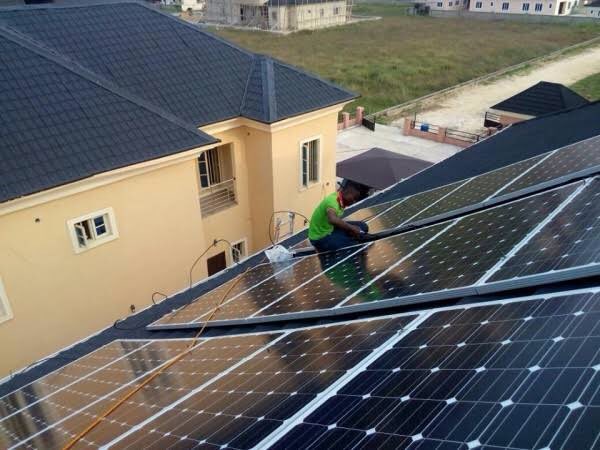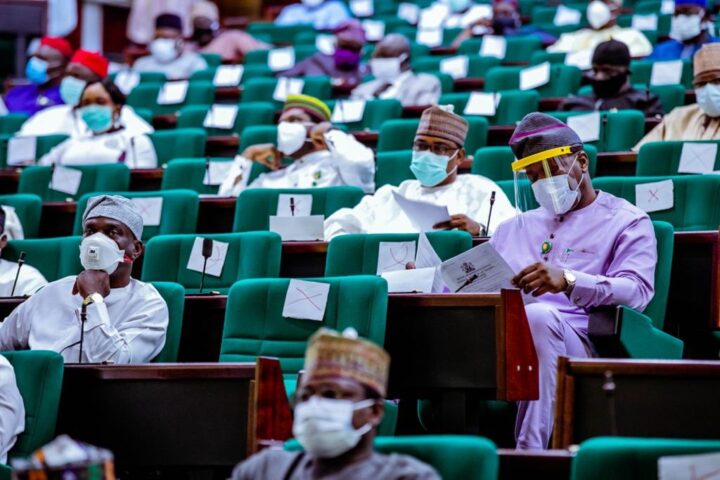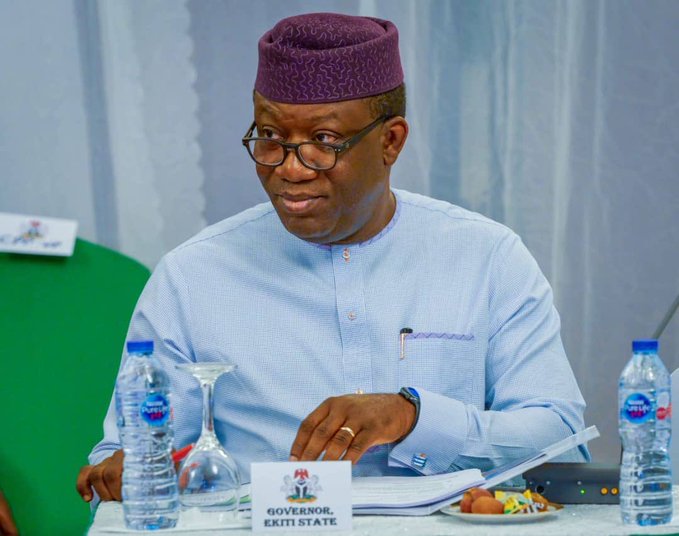New economic imperatives for securing lives and livelihoods in Nigeria
BY ADE ADEFEKO & JP OLANREWAJU
“The Black Swan” is an idiosyncratic tittle of a best sellerbook written by Nassim Nicholas Talib, which was published thirteen years ago in 2007.In the book, he explained:“the Black Swan is about those unexpected events that end up controlling our lives, the world, the economy, history, everything. Before they happen, we consider them close to impossible; after they happen, we think that they were predictable and partake of a larger scheme. They are rare, but their impact is monstrous.”By any measure, the COVID-19 pandemic exemplifies the Black Swan metaphor.
Either way, we are in the midst of this pandemic as the Nigerians and the rest of the world, combat this highly infectious disease. The economic consequences will becatastrophic, and we are already starting to feel the hardship.
Advertisement
According to the latest economic outlook by IMF, “the health crisis is having a severe impact on economic activity. As a result of the pandemic, the global economy is projected to contract sharply by –3 percent in 2020, much worse than during the 2008–09 financial crisis.”
Sub Saharan Africa is facing an unprecedented health and economic crisis. The regional economyis projected to contract by (-)1.6% down from a GDP growth of 3.1% in 2019- the lowest ever. Across countries, the less diversified economies will be hit the hardest, reflecting the impact of lower commodity prices and containment efforts. The region’s two largest economies Nigeria and South Africa will contract in 2020. Nigeria’s GDP is predicted to contract by(-)3.4% and a recovery projected in 2021.
Advertisement
Policy imperatives for Nigeria
What are the policy options available? The immediate priority is indeed to contain the impact of the health crisis and protect the lives of citizens.This must be accompanied by solutions to safeguard livelihoods by helping the firms and vulnerable masses.Every crisis is also an opportunity: This article examines what Nigeria should do in the short term i.e., next 6 months and in mid-term i.e.,2020-21. We’ll also discuss the examples of other Sub Saharan countries that have achieved relative progress in diversifying their economies in recent years and inoculated themselves against the debilitating effects of economic downturns. We chose to focus on two segments which can have a vast impact on diversification of revenue base and resultant job creation: Non-oil exports and Textiles.
Non-oil exports
According to WTO statistics, Nigeria’s merchandise exports in 2018 were USD 61 billion, predominantly crude oil(93%) As per data published by CBN, the non-oil exports in the first half of 2019 (Top 100 exporters)amounted to USD 976 million This indicates tremendous potential to grow the non-oil exports sub-sector.
Advertisement
Nigeria’s non-oil exports consist of mainly semi-processed and processed agro-allied products such as cocoa, sesame, cashew, sheanuts, frozen shrimps & prawns and cotton, accounting for 47% of all products (CBN,2018). The European Union is the principal destination for Nigeria’s non-oil exports representing 25% market share followed by ECOWAS at 17%.However, in recent years, exports to non-traditional markets such as Vietnam, Brazil, China, India and Japanhas increased significantly. Certain non-traditional products added to the Nigerian export basket include Urea.
Sesame – a success story
Thanks to Government policies to encourage exports of value-added products, exports of hulled sesame seeds have been a success story in the last decade. Nigeria’s present exports of sesame seeds are estimated at over USD 200 million. Exporters have invested in state- of- the-art processing plants. This has resulted in higher income for the sesame farmers as the volume and value have both increased. According to CBN data, in 2007, Nigeria’s production of sesame (aka Beniseed) was estimated at 137,000 tons and the price realized by the farmer was N 94,000 /ton.Whereas in 2018, the output had quadrupled to 399,000 tons and price realization increased to N 390,000/ton. The farmers not only benefited from market access but also boosted their incomes.
Advertisement
Shea nuts – women’s empowerment
Shea nuts are sourced from trees which grow naturally in the wild, in a process that involves collection, selection, washing, drying, pulp removal, and in some cases, shelling. This process has an important socio-economic role in Nigeria because over 500,000 local women are involved in collecting the nuts, many of whom are otherwise unemployed. Shea cake and Shea butter production therefore provides off-take of Shea nuts which in turn secures the livelihoods of women and youth in communities growing Shea trees.
Advertisement
Although Nigeria is ranked top in the production of shea nuts, but in terms of export of shea butter, the country islagging behind. Whereas, Ghana is a leading exporter of shea butter, most of the nuts processed in that country are from Nigeria. This is an irony! Concerted efforts should be made to support small and medium sized firms to set up small to medium processing plants in various parts of Nigeria to process shea nuts instead of allowing them to be informally moved to Ghana where value-added exports of the produce take place. In addition, efforts should be made to develop shea plantations to complement the existing shea trees which grow in the wild.
Textile & garments
Advertisement
Textiles was the cornerstone of economic development in most developed and developing countries in the late 60s and early 70s. The developing countries in Asia not only become self-sufficient in production but became part of the global supply chain. In 2000 China’s exports of textiles & apparel were US$ 53 bn; in 2019, they had increased five-fold to US$ 271 bn. However, as China’s cost competitiveness is getting eroded, international buyers have diversified their sourcing to other developing and less-developed countries such as Vietnam, Bangladesh, Cambodia and Myanmar. Bangladesh is a success story. In 2018 its export of apparel was US$ 36 bn, accounting for 80 % of the country’s total merchandise exports. Bangladesh has a population of 165 million of which 4.5 million are directly employed in the garment industry and over 70% of them are women.
Emerging East Africa
Advertisement
East African nations have achieved great strides in attracting Foreign Direct Investment (FDI) in the textile and garment industry as reflected in their rapidly growing exports. According to Gherzi, a Swiss based textile consulting firm, exports of textile & apparel from Africa increased from $14.8 bn in 2010 to 17.2 bn in 2019 and is expected to further grow. Sub Saharan African countries likeEthiopia, Kenya and Madagascar have established large industrial parks to attract FDI from Asia and created an enabling environment to boost exports. Ethiopia’s textile industry is vertically integrated and employs about 100,000 persons. The Hawassa Industrial Park built in 2016 has attracted investment from vendors who supply mainly to PVH, the renowned US clothing buyer and envisaged to create 60,000 jobs in the zone. Kenya, likewise boasts of being the No.1 exporter under AGOA with apparel & textile exports in 2019 valued at USD536million providingdirect employment to 45,000 workers.
West Africa
West African countries have taken a cue withGhana, Burkina Faso and Senegal attracting FDI in the industry. In fact, the Ghanaian Trade Minister Hon Alan Kyerematen has been aggressively pursuing FDI to leverage its developing infrastructure, efficient ports and investor-friendly policies. Burkina Faso’s policy imperative is to add value to its cotton, 90% of which is currently being exported as a primary commodity.
In Nigeria, the Central Bank has been driving the agenda for revival of Nigeria’s cotton-textile industry. It has achieved some result however there are further improvements to put the industry on agrowth track. According to Gherzi, Nigeria’s imports of textiles valued at over US$ 5 billion create an opportunity for import substitution. However, that would require a high level of consistent support to provide the industry a level playing field and an enabling environment. This is one industry which can rapidly create jobs, add value to our raw materials and save foreign exchange.
Competitiveness
So, what ails Nigeria’s non-oil exports? Nigeria lacks the competitiveness due to several factors such as infrastructural bottlenecks, high cost of doing business and productivity. The Global Competitiveness Index (GCI)evaluated by the World Economic Forum, covering 141 economies, measures national competitiveness—defined as the set of institutions, policies and factors that determine the level of productivity. According to the GCI 2019, Nigeria was ranked 116 with a score of 48.3 compared to Kenya at 95th place with a score of 51.2. Even regional rivals such as Ghana were ranked above at 111th place whereas South Africa, the second largest economy in sub Saharan Africa was ranked 60th with a score of 62.4. Nigeria’s competitiveness was impacted by lack of an enabling infrastructure skill set and innovation.
Incentives
Most developing countries support their export-oriented industries with fiscal and other incentives. China, which is the world’s largest exporter of merchandise with exports in 2018 at US$ 2.5 trillion gives an export tax rebate of up to 17% to neutralize the incidence of indirect taxes and levies on its exports. India, likewise, with merchandise exports of US$ 326 bn offers a package of incentives, especially to its labourintensive industries such as textiles &garments as well as leather & footwear. Interestingly, these two developing countries were also ranked among the Top 10 exporters of agricultural products and growing at 6-7% p.a. as per WTO.
Exhibit: Top agricultural exporters (WTO 2018)
| Country | US$ Bn |
| Extra EU-28 | 181 |
| USA | 172 |
| Brazil | 93 |
| China | 83 |
| Canada | 69 |
| Indonesia | 46 |
| Thailand | 44 |
| India | 39 |
| Australia | 38 |
| Mexico | 35 |
Nigeria had long recognized the need to diversify the economy and promote non-oil exports. The Export (Incentives and Miscellaneous Provisions) Act was passed in 1986.The new Export Expansion Grant (EEG) guidelines were introduced in 2017 and based on the policy commitments, non-oil exporters embarked on renewed investment in processing capacity and made commitments to international buyers.
According to CBN data, non-oil exports increased from N675 millionin 2016 to N 1,367 bn in 2018. In the first half of 2019, non-oil export was to the tune of about US$ 1 bn.The EEG scheme has helped to formalize the export channels as goods undergo pre-shipment inspection by agencies appointed by the government. Moreover, the forex proceeds are repatriated through banks and verified by the Central Bank Of Nigeria.
Unfortunately, the current policy to encourage exports through the policy instrument of EEG has not been effective due to implementation bottlenecks.Although the enabling Act puts the administration of the EEG squarely on the Nigerian Export Promotion Council (NEPC),however ministerial bureaucracy stifled efficiency resulting in perennial backlog of claims.
The new EEG guidelines were introduced in 2017,with a provision that the NEPC should prepare and submit annual budgetary proposals to government for consideration and approval. This was meant to create transparency and predictability in the disbursement of incentive the Ministry of Finance, Budget and Planning is yet to put in place an effective mechanism for implementation.
The non-oil export value chains in Nigeria employ over 10 million people, most of them in rural areas. The sector also fosters gender-equality as a lot of women are employed in the harvesting and processing of exportable agricultural produce. The need for a serious consideration of fiscal and monetary incentives as support for non-oil exports in Nigeria therefore cannot be overstretched.
Call to Action
The imminent decline of oil revenue in the wake of the pandemic should be a call to actionfor policy makers.Diversification of the Nigerian economy needs to be taken up on a war footing to create momentum in the next 1 to 3 years. There is the need to identify the “quick wins” and assiduously create an enabling environment for the private sector to realise them.The Nigerian Export Promotion Council has identified some of these quick wins, and all we need to do is to support them with implementable policies on a consistent basis. This is the right time to bring up the NEPC’s “Zero Oil Policy” for serious consideration and implementation. The impetus given to the cotton-textile sector needs to be sustained. Enough of rhetoric. The time to act is now
With clear vision and consistent implementation of policies, Nigeria should be able to mitigate the impact of Coronavirus on human lives and also secure livelihoods.
Adefeko is Chairman, Agricultural Trade Group at NACCIMA. Olanrewaju is the former DG of NTMA and currently Executive Secretary of OPEXA.
Views expressed by contributors are strictly personal and not of TheCable.
Add a comment





